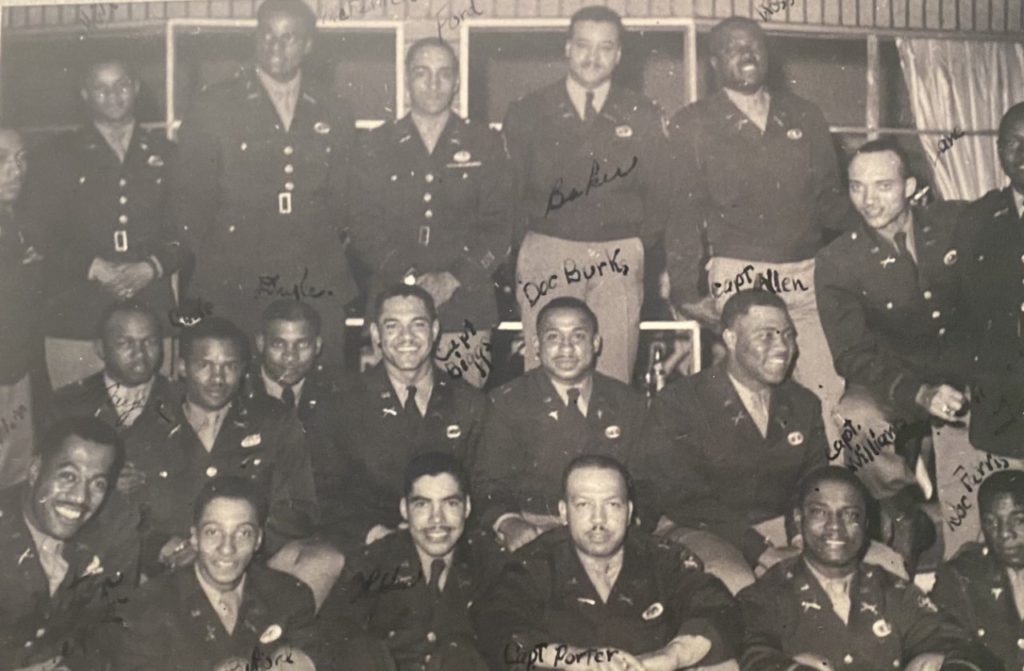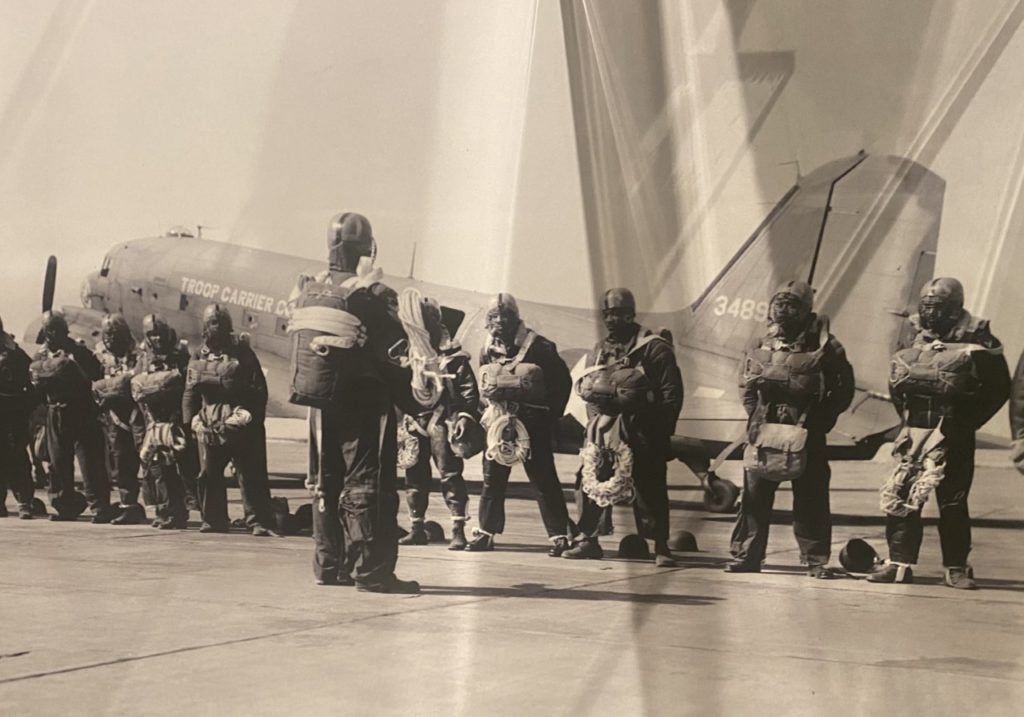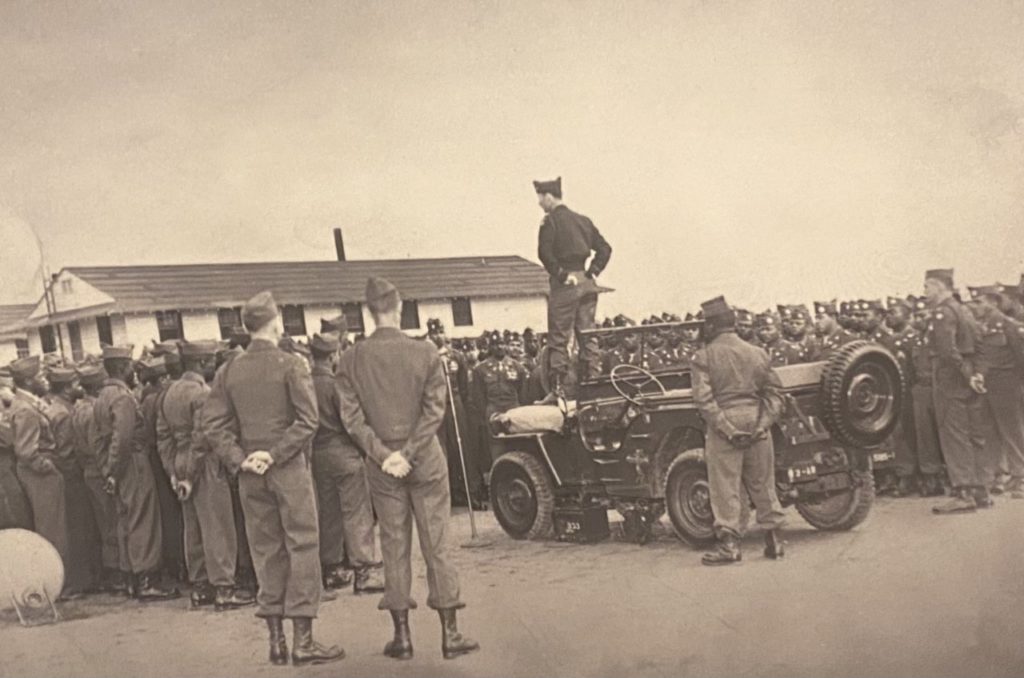The History of the Triple Nickles
“The history of the Triple Nickles is an untold chapter in black social history. The high professional standards of the men of the 555th, their skill in airborne operations, fearlessness in testing new concepts, and effectiveness in training other service personnel marked them as black pioneers..”
Bradley Biggs, Lieutenant Colonel, USA, Retired; 555th historian
Black soldiers, sailors, marines, and airmen played and indispensable role during World War II. They joined the fight for freedom, even when they were not completely free themselves. During the war, they served as fighter pilots, artillerymen, combat engineers, signalmen, and infantrymen, but, more often than not, their innate kills, courage, and dedication to duty were overlooked or ignored. Racial prejudice ruled the day in America, but intrepid black paratroopers established a new paradigm, one of which would help lead the way to equality and justice in the U.S. Army.
Company A, 555th Parachute Infantry Battalion, was activated at Fort Benning on December 31, 1943. Twenty-three officers and enlisted men were the first black soldiers to graduate from Jump School, long held to be one of the most difficult training centers in the Army. These Soldiers were, in effect, the black test platoon. The 555th Parachute Infantry Battalion was activated at Camp Mackall, North Carolina, on November 25, 1944, under the command of Captain James Porter, often thought of as the “Father of the 555th”. Porter and his men knew they were under an Army microscope, with observers waiting to criticize every move, every misstep. In the face of this challenge, the troopers performed their duties with efficiency and dignity.

In March 1945, the 555th was ordered to provide a reinforced company for participation in Operation FIREFLY in Oregon and California. Japanese balloon bombs and natural fires were causing forest fires along the Pacific Coast. The 555th troopers were the Nation’s first line of defense. At Camp Pendleton, Oregon, the company was trained in “smoke jumping” techniques, developed in the 1930s by the U.S. Forest Service as a means to combat wild fires. Throughout the summer of 1944, the troopers plunged by parachute into some of the most difficult terrain in the Pacific Northwest. They were the Army’s first rough terrain jump specialists.

forest in the Pacific Northwest.
During late 1947, Major General James Gavin, 82nd Airborne Division Commander, conducted a ceremony that transferred the 555th troopers to the 3rd Battalion, 505th Parachute Infantry Regiment. Gavin’s action was a first step towards integrating black soldiers into the ranks of the 82nd, a bold move in 1947. The 555th, the Army’s only black parachute battalion, was now inactive, but the troopers always thought of themselves as Triple Nickles. In the years ahead, they would be the cutting edge of efforts to integrate the Army. Gavin’s vision of racial equality and their resolve would help to transform the Army. They were a vanguard of freedom.

General Gavin was determined to make the black troopers part of the All American Division, despite the prejudice and
discrimination that existed throughout America. Like the Triple Nickels, he too was a pioneer.
Did you enjoy this content? If so, please consider giving a gift to the ASOM Foundation so generations to come can learn about the legacies of Airborne and Special Operations Soldiers.



